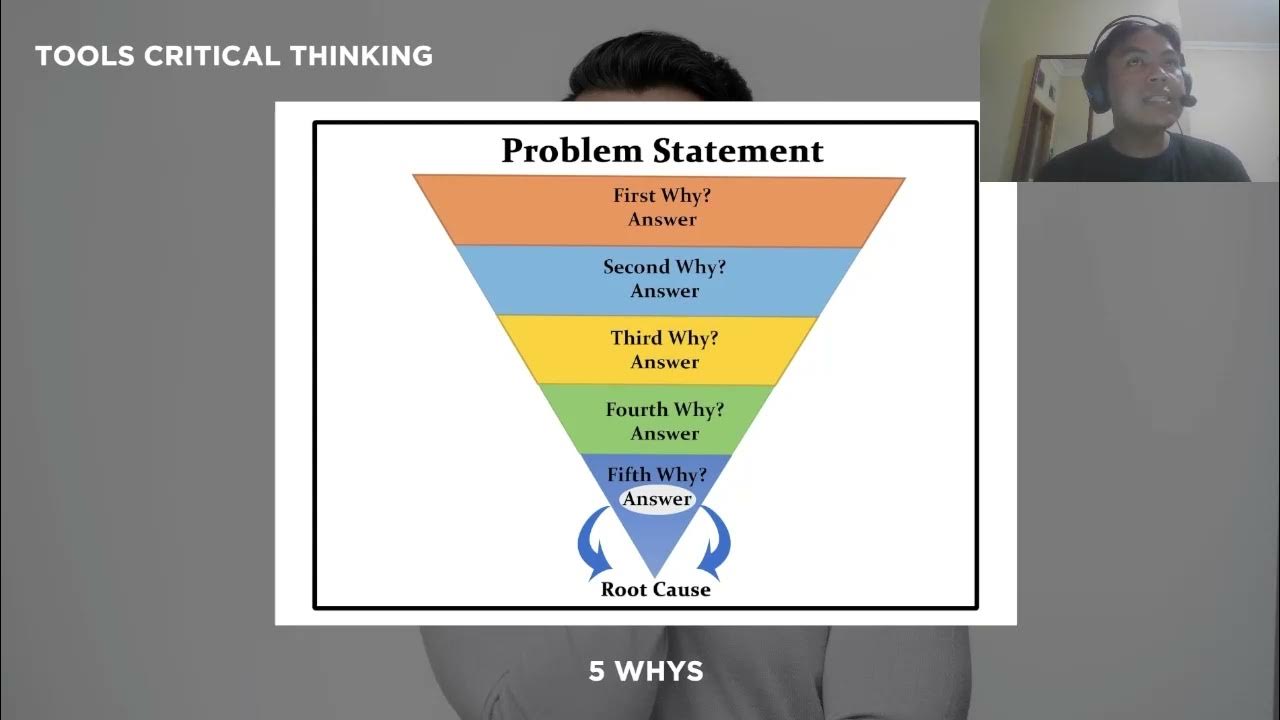What is the Socratic Method
Summary
TLDRSocratic questioning is a method of teaching based on structured, thoughtful questioning that encourages critical thinking and independent learning. By posing probing questions, educators help students examine and justify their beliefs and assumptions. This technique fosters a deeper understanding of topics by moving beyond rote memorization. Key types of Socratic questions include clarifying concepts, probing assumptions, and questioning implications. Through cooperative dialogue, students engage in reflective thinking, making the process of learning more meaningful and helping them develop higher-order thinking skills.
Takeaways
- 😀 Socratic questioning encourages students to think critically by examining their own ideas and reasoning through structured dialogue.
- 😀 The Socratic method is a cooperative process where teachers ask probing questions to draw out knowledge from students, rather than directly providing answers.
- 😀 The Socratic method follows a three-step process: posing a question, students proposing an answer, and evaluating the answer with further probing questions.
- 😀 The focus of Socratic questioning is not on finding the 'right' answer, but on encouraging students to justify and test their answers through reasoning.
- 😀 Socratic questioning can be used to explore various topics deeply, such as values, beliefs, emotions, and social issues, through critical analysis and debate.
- 😀 Teachers use Socratic questioning to foster independent thinking in students, allowing them to take ownership of their learning process.
- 😀 The six main types of Socratic questions are: clarifying concepts, probing assumptions, probing rationale, questioning viewpoints, probing implications, and questioning the question.
- 😀 Clarifying concepts helps students define their ideas more precisely, encouraging deeper understanding through questions like 'What exactly does this mean?'
- 😀 Probing assumptions helps students examine underlying beliefs and challenge unquestioned assumptions, prompting them to think critically about their reasoning.
- 😀 Probing rationale and evidence pushes students to provide supporting evidence for their arguments, fostering a more thorough evaluation of their ideas.
- 😀 Socratic questioning promotes higher-order thinking skills, such as analysis, evaluation, and synthesis, which are essential for academic growth and independent learning.
Q & A
What is the main idea behind Socratic questioning?
-Socratic questioning is a method of exploring ideas and beliefs through structured, logical dialogue. It involves asking probing questions to help individuals examine the validity of their ideas and assumptions, promoting deeper understanding and critical thinking.
How does the Socratic method differ from traditional teaching methods?
-Unlike traditional methods where the teacher directly imparts knowledge, the Socratic method involves the teacher asking open-ended questions to draw out knowledge from students. This encourages independent thinking and self-discovery, rather than just memorizing facts.
What role does questioning play in Socratic dialogue?
-In Socratic dialogue, questioning serves to probe underlying assumptions, examine reasoning, and encourage critical analysis. It helps students test their ideas, understand different perspectives, and develop their own logical conclusions.
What is an example of a Socratic question in a classroom setting?
-An example could be asking students in a fashion design lesson: 'Is there a lack of diversity represented in fashion magazines?' This question prompts students to reflect on their ideas and draw on prior knowledge to form an answer.
How do Socratic questions contribute to students' learning?
-Socratic questions help students refine their thinking, justify their answers, and explore their beliefs more deeply. This leads to enhanced critical thinking skills, more meaningful learning, and a better understanding of the material.
What is the three-step process of using Socratic questioning?
-The three-step process involves: 1) posing a question to the students, 2) students proposing an answer, and 3) evaluating the answer through further probing questions to encourage deeper thought.
Why is it important to avoid simply giving answers in Socratic questioning?
-Avoiding direct answers ensures that students are engaged in the thinking process themselves. By formulating and testing their own ideas, students take ownership of their learning, which makes the experience more meaningful and helps them develop critical thinking skills.
What are the six typical types of Socratic questions?
-The six types of Socratic questions are: 1) Clarifying Concepts, 2) Probing Assumptions, 3) Probing Rationale, Reasons, and Evidence, 4) Questioning Viewpoints and Perspectives, 5) Probing Implications and Consequences, and 6) Questioning the Question.
How does Socratic questioning help students analyze different viewpoints?
-Socratic questioning encourages students to consider alternative viewpoints by asking questions like 'Who benefits from this?' or 'Why is it better than or different from other perspectives?' This promotes open-mindedness and a broader understanding of complex issues.
What is the purpose of questioning the question in Socratic dialogue?
-Questioning the question encourages metacognition. It helps students reflect on why certain questions are asked and what underlying assumptions might be present. This can deepen their understanding of both the topic and the thinking process.
Outlines

Cette section est réservée aux utilisateurs payants. Améliorez votre compte pour accéder à cette section.
Améliorer maintenantMindmap

Cette section est réservée aux utilisateurs payants. Améliorez votre compte pour accéder à cette section.
Améliorer maintenantKeywords

Cette section est réservée aux utilisateurs payants. Améliorez votre compte pour accéder à cette section.
Améliorer maintenantHighlights

Cette section est réservée aux utilisateurs payants. Améliorez votre compte pour accéder à cette section.
Améliorer maintenantTranscripts

Cette section est réservée aux utilisateurs payants. Améliorez votre compte pour accéder à cette section.
Améliorer maintenantVoir Plus de Vidéos Connexes

🚀 AI Meets the Socratic Method: The Ultimate Learning Hack! 🌟

The Best Learning Method in History: 2,400 Years Ahead of Its Time

A Brilliant Oxford Professor taught me how to think (you can learn too)

Inkuiri ABCDE Seri 4: Bagaimana Inkuiri dalam Pembelajaran?

Ep. 2 | Kacamata Kritis: Melihat Lebih Dalam

SHS Philosophy Q1 Ep5: Methods of Philosophizing, Different Fallacies, and Information Literacy
5.0 / 5 (0 votes)
